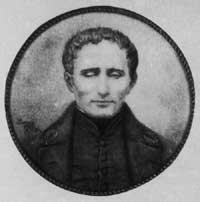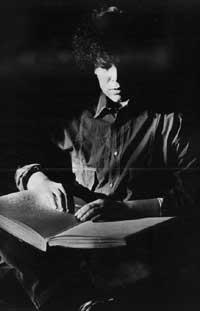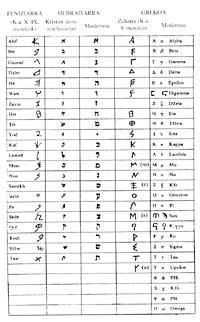Mathematical writing in braille
1994/10/01 Angulo, Patxi Iturria: Elhuyar aldizkaria
The article entitled "The Ten Figures"* allowed me to know the alphabet of the blind, Braille, and that of the sparrows. These two alphabets are not limited to expressing letters and figures in another way, but occupy the entire framework of communication between two people, which normal people explain orally and in writing, if blinds and deaf mutes can appear in braille or gestural systems. This idea led me to look for the special signs and gestures that use mathematics and we want to present a small sample of all the material we have worked on now. We will start with the braille system which then we will explain the system of gormutes.

We sum up the history of the Braille alphabet. The Braille alphabet was first published in 1829 by Louis Braille (1809 1852). Braille's alphabet is based on another invented by Carlos Barbier. The Barbier system included all sounds and letters in French in two 6x6 and 5x5 tables. Then he used two figures to express letters and sounds, the first representing the sound or the row of the letter and the second the column.
Although initially intended to make secret writings (thinking it was convenient to write in the dark), it occurred to him to record instead of the numbers as many points as represented the rows and columns of the sound or letter in two columns. He later thought that this system would be beneficial to the blind. This system was presented by Barbier in 1819 at the Organization of Young Blind People in Paris. That same year he joined the Louis Braille Organization. It must be mentioned that before the blind read the same letters as us, but in relief.
From the Barbier system others were invented but the only one that advanced was that of Louis Braille. In 1825 the base of the system was already built, but it had to be tested. In 1827 some fragments of “La Grammaire des Grammaires” were written in Braille. In 1829 “La Grammaire” by Noël and Chapsal was written. In the same year the first explanation of Braille's writing method appeared, written in the previous system, in the relief of our letters: “Procédé pour écrire les paroles, la musique et la plain-chant au moyen de points, à l´usage des aveugles et disposés pour eux”. In it, along with the letters, he gave mathematical figures and symbols. Over the next eight years numerous essays were conducted with the students of the Institute and their conclusions appeared in the second edition of their “Procedure” of 1937, in which the alphabet, figures and spelling symbols were established.
On the other hand, Braille dictated a jog to write on his system, like his writing, based on Barbier's rules.
As for the extension of writing, it was officially approved in France in 1854. His first book, “Précis sur l´histoire de France divisée par siècle, acompagné de synchronismes relatifs à l´histoire générale placés à la fin de chaque règne”, was published in 1837. In the publication of the “Procedure” of 1937 Father Gurea wrote in six languages through the braille system: Latin, French, Italian, Spanish, German and English.

In the different villages changes were made in the braille system to adapt it to the local language. Switzerland was approved at the Francophone in 1858. In 1873, in Leipzig, “I. Teachers of the Blind. The “Congress” was held, a great mix. He entered the Society in Austria in 1867. II. The congress took place in Dresden in 1876. In it 14 schools were in favor of German adapted braille. 11 more schools in favor of the original braille. The conclusions of the Universal Congress held in Paris in 1878 were favorable to the generalization of the original braille system. Berlin, III. 1879 During the congress, Germany approved the complete braille system. In the United States the situation was more confusing and until 1917 there was no consensus. In 1929 a committee of experts met in Paris and accepted musical writing in Braille.
On the other hand, in countries where our writing is not used, the braille alphabet is adapted to local alphabets. In 1949 UNESCO established the principles of uniformization of the braille alphabet. In 1950 they were also approved for the languages of India and in 1951 (Beirut) for the Arabs. Japanese, Chinese and African languages remain unadapted.
Finally, the mathematical and scientific writing unit began at the 1929 Vienna Congress. In 1987, in Montevideo, the unified mathematical code was approved at the braille imprent session in Spanish.
That is the code we bring here. Of course, there are many mathematical symbols and not everyone would enter here. Therefore, we have published a summary of the code, divided into seven sections, as an example of Braille mathematical writing. On the other hand, whoever wants to analyze the entire braille system can go to the ONCE, where you can get all the information.
It has been shown that blindness is not an insurmountable obstacle to learning mathematics, and in general any subject. The biggest obstacle is economic. Braille books should be larger and writing needs special material. Thanks to the ONCE.
NOTE: Tables explaining how mathematical operations are represented in the Braille alphabet are only available in the PDF format of the article.

Gai honi buruzko eduki gehiago
Elhuyarrek garatutako teknologia





